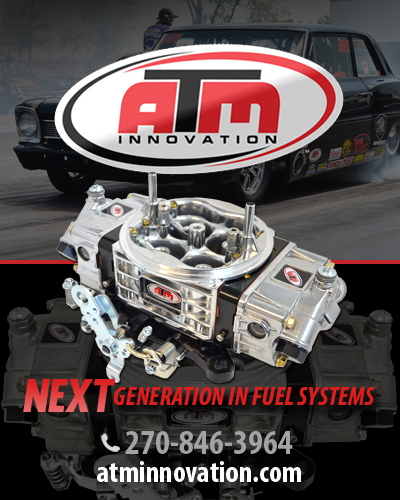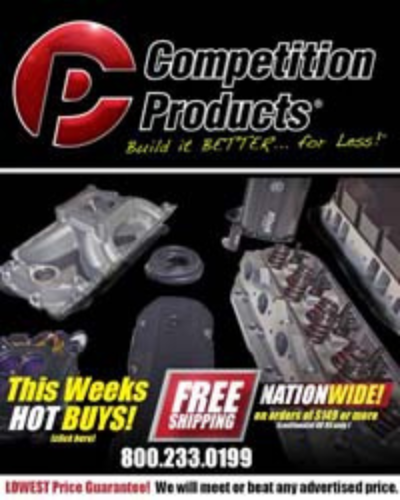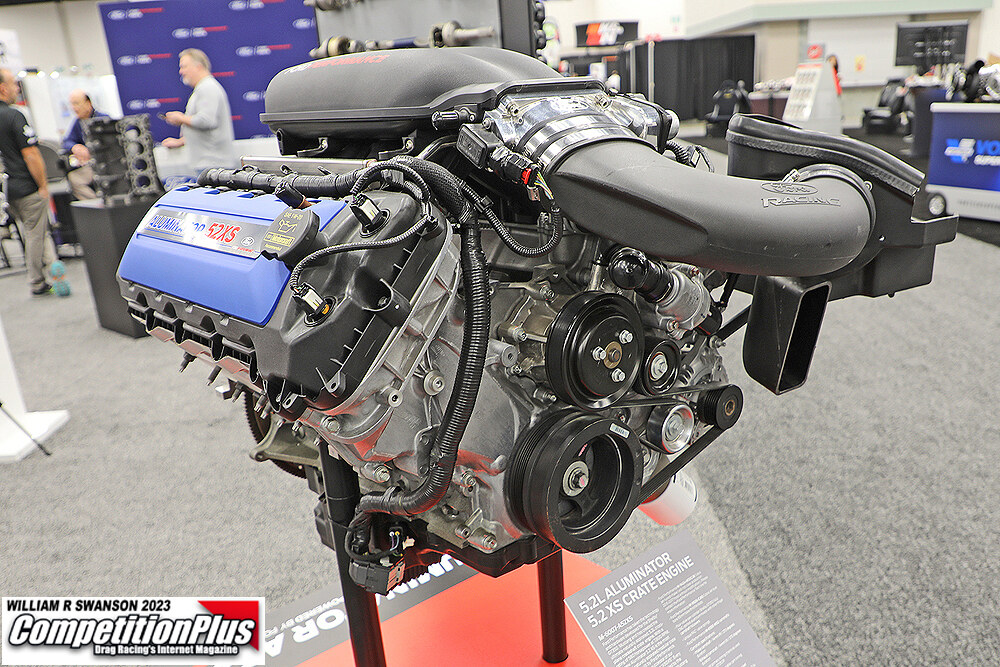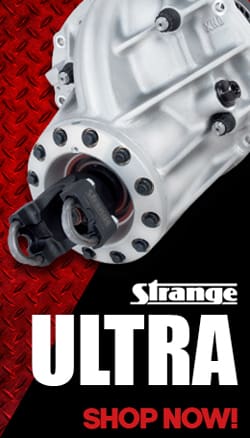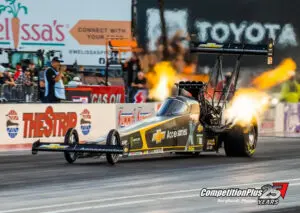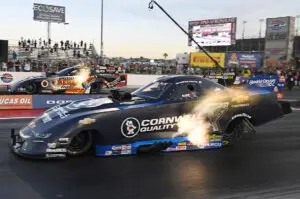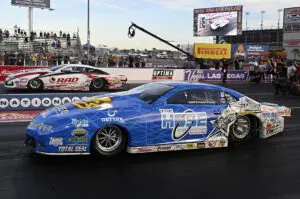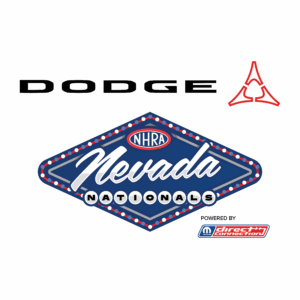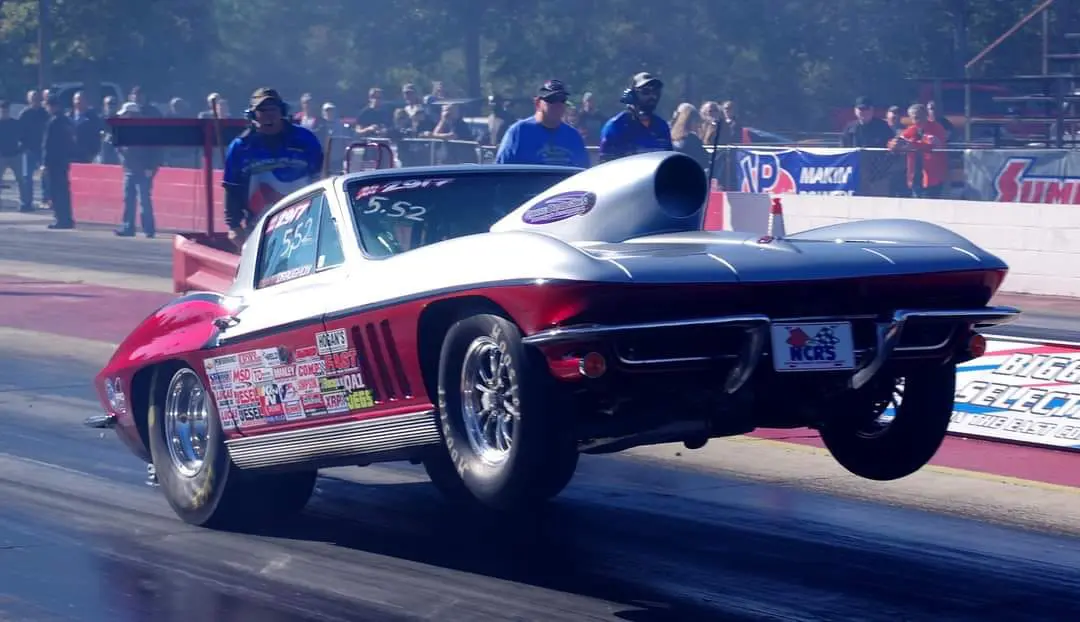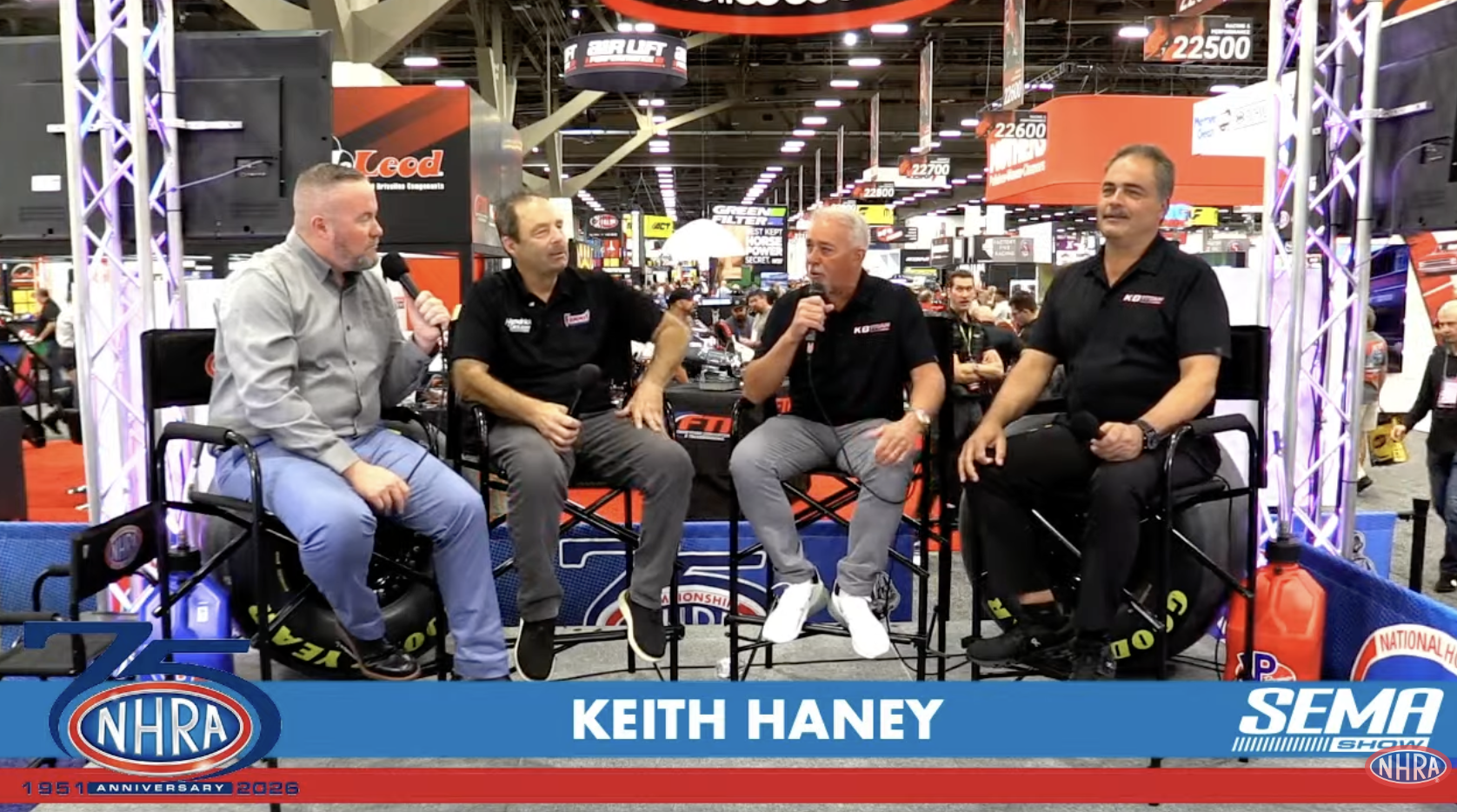 The purpose of this series is to bring a fuller understanding of the
The purpose of this series is to bring a fuller understanding of the
major components of Top Fuel Dragsters and Funny Cars with an insider’s
perspective. We will touch on many items in detail and how the
components and various systems are interrelated along with a few side
notes and an occasional story along the way.
The list of subjects covered will be vast and detailed to the degree
necessary for the above average fan and simple enough for the average
fan to come away with a better appreciation of the intricacies of the
modern “Nitro” car.
Today’s lesson focuses on the nitro chassis.
This Special Series Gives You The Insides and Outs of Nitro Racing from the Technical Side …
Mike Kloeber is certainly one of the most talented tuners to ever crew chief a nitro car.

He began working in the nitro ranks during his teenage years, spinning the wrenches for champions such as Gary Beck, Jeb Allen and the Candies-Hughes team, just to name a few.
Kloeber earned his first crew chief job in 1986 when the legendary Don “Snake” Prudhomme hired him away from Tom “Mongoose” McEwen.
He took a break from racing in 1990 to pursue an education in aeronautical engineering and was content to pursue a job in another field until he assisted Len Seroka in returning to Top Fuel.
The sport might have been on the sidelines for Kloeber, but a few trips to the track provided all the proof that he needed to confirm the passion still burned in his heart for drag racing.
Kloeber joined on with Jim Epler and tuned his Funny Car to the sport’s first 300-mph Funny Car run.
Of all the accolades he gained along the way, few could compare with the six IHRA Top Fuel world championships he earned alongside of Clay Millican, a driver with whom he tuned from his first ride in 1999 up until 2007.
He’s since enjoyed stints with Bob Tasca III and Kenny Bernstein Racing.
Kloeber accepts his latest drag racing role, an opportunity which provides the challenge of educating the above average drag racing fan with the intricacy involved in maintaining and tuning a Top Fuel dragster.
UNIVERSITY SYLLABUS
The purpose of this series is to bring a fuller understanding of the major components of Top Fuel Dragsters and Funny Cars with an insider’s perspective. We will touch on many items in detail and how the components and various systems are interrelated along with a few side notes and an occasional story along the way.
The list of subjects covered will be vast and detailed to the degree necessary for the above average fan and simple enough for the average fan to come away with a better appreciation of the intricacies of the modern “Nitro” car.
a d v e r t i s e m e n t
Click to visit our sponsor’s website
GETTING STARTED – CHASSIS 101

This
is an example of a Dragster cockpit.

When you want to go racing you have to start from the ground up and a bare chassis is everybody’s starting point.
Today’s car is built from 4130 condition N tubing. The N stands for normalized. The purpose of normalizing is to remove the internal stresses induced by the manufacturing process. There has been considerable focus on the diameter and wall thickness as well as the use (or not) of hardened tubing in recent years and we won’t put the issue under a microscope as it has been in the past. I am happy to say that we are back to the same old stuff that we have used for decades, predictably and reliably.
Typically in the Roll Cage and the Shoulder Hoop (the portion that goes around the driver shoulders) the chassis tubing is 1½ inch diameter and is telescoped down in size as the chassis extends forward to the front of the car. Typically the tubing would be 1 1/4” or 1 1/8” in the front, depending if it is Top Fuel or Funny Car. The driver’s area is intended to be the strongest portion of the car for obvious reasons. In the event of an accident the other portions of the chassis are intended to absorb the energy of the accident by bending or breaking off leaving the driver’s area intact. The rear end is mounted solid with bolts.
The real magic of a particular chassis is in the tubing layout of the uprights and diagonal tubes that connect the top and bottom rails together. This is where engineering and creativity comes into play. Most of the driver’s area and other critical areas have mandatory specs. You might ask how those determinations are made. The Chassis Builders group meets with SFI. NHRA and IHRA attend and monitor the annual meetings. When the dust settles on the engineering studies and arguments that are presented rules and recommendations are made (SFI specs.) and adopted by the sanctioning bodies. Some of these meeting have been very exciting and occasionally they don’t agree on the how or why of rules changes, and there’s lots of arguing and name calling. I’ve never been to one of the annual meetings but I have it on high authority there have been times when it would be worth the price of admission.
a d v e r t i s e m e n t
Click to visit our sponsor’s website
CHASSIS 102 – UNDERSTANDING SUSPENSION
Back to the magic of the chassis, because there typically is no suspension (save for Wilkerson’s new car), the flexing of the chassis helps to create weight transfer. Other factors also come into play such as engine location, in both distance away from the rear end and the height of the engine. In a dragster, the location of the driver is critical as well.
Example; if you were building a car for a big guy like Doug Herbert you wouldn’t put him in the same location as a guy like Antron Brown or Clay Millican. You would move Herbert’s driver box as far back as you could so the car wouldn’t be nose heavy. Most of the cars are fairly close today in these locations. The Funny Car is a little less sensitive to engine and driver position because the center of Gravity (CG) is near the center of the car and all the drivers sit in the same location. Most of the engine locations are the same. To get the balance right on the FC you do things like move the fire bottles and other components like the Racepak to the rear of the car to lighten the front of the car. A car that is nose heavy tends to want to spin or smoke the tires more easily than expected. They also tend to have slow 60 ft. times. Raising or lowering the engine will also help to fine-tune the launching characteristics. Again, most of the cars are within a ½ inch of each other in engine height. Trends over a 10 to 15 year period have been for the engine to move away from the rear end (2 to 3 in.) and the engine has dropped a couple of inches as well.
Chassis flexibility can be changed by the location and the angle of the uprights and where and how the diagonal tube attaches to the uprights. Another factor is how far apart the top and bottom rails are apart from each other. The farther apart the top and bottom rails are from each other can make the chassis stiffer. Bends in the top and bottom rails also play a role in stiffness. If there is less of a bend in the tube it tends to be stiffer.
a d v e r t i s e m e n t
Click to visit our sponsor’s website
CHASSIS 103 – THE FUNNY CAR CHASSIS

John Force’s three-rail chassis. Photo by brobertson2, CompetitionPlus.com Message Board
A current trend in Funny Car chassis is slip joints in the front half (ahead of the rear motor plate or engine). A slip joint is where you slide a piece of tubing over the outside of the tube and weld the diagonal or cross member to the sleeve. Many times the sleeve is allowed to move freely in one direction and the travel is limited in the opposite direction to achieve the desired results. Some of the Funny Cars have most of the tubes in the front half on slip joints. There is a great deal of engineering, thought and testing to determine the best configuration. The demands of the chassis needing to have more integrity created the demand for a strong and flexible joint that would perform similar to the “old way” of the solid joint of smaller and thinner tubing. The three-rail McKinney Funny Cars like John Force runs employ widespread usage of slip joints in the front half.
Another chassis tuning tool Funny Cars have is an adjustable front spindle. Under and above the king pin there are shims to raise or lower the spindle in relationship to the chassis that lets you adjust the pre-load. Strange engineering has been making these for about 20 years. By adjusting the spindle height left vs. right, a pre-load is created in the right rear tire. A pre-load amount of 40 to 60 lbs. is an average pre-load number used by most teams. This is primarily done to make the car go straight off the starting line when the tire is still wide and short. Many of the top Funny Car teams will “scale” the car every few races to track changes over time and keep the setup the same. Chasing an unstable chassis can be very frustrating and can make the difference in not qualifying or running low E.T.
You can see that the Funny Car takes a significant amount of maintenance to stay on top of the chassis. They tend to twist and bend over time. Some teams will use two or more chassis during the season to maintain their competitive advantage. Aside from a wheel stand most of the real damage comes from the shut down area where you get a reversal of force from shutting the throttle and coasting down through some rough shut downs. When you hit bumps or undulations in the track and are on the brakes the car can start to bounce and they aren’t really made to be bounced, so that takes a toll over time.
Back in 1988 and 1989 when I worked for Don ”Snake” Prudhomme, we didn’t have any pre-load in the right rear. We had a car that was very quick early and went straight most of the time. After making about 180-plus runs over the two year period we ran that chassis it was the same as when we started. We didn’t scale the car very often but when Larry Dixon (back when he was the bottom end guy) and I finished putting it back together when we switched to the dragster we scaled it and the chassis weights hadn’t changed enough to talk about. I think over the two seasons that we ran that chassis we match raced it 6 or 8 times total and some of them weren’t the greatest places. It was a simpler time then although it didn’t seem like it at the time.
a d v e r t i s e m e n t
Click to visit our sponsor’s website
CHASSIS 104 – THE FLEXING DRAGTER
How do you adjust a Dragster chassis? (See Figure1)There just aren’t many mechanical adjustments to the dragster. From the

Figure 1.
beginning you arrange the engine and driver location for his weight and the philosophy of the chassis builder and the crew chief. The length of the driver’s box will also play a small part in the flexibility in the front half of the chassis. If you are fortunate to have a small driver you can shorten the driver’s box and this will allow for longer bay lengths. The bay length is the distance from the end of the driver’s box to the first upright in front of the driver. The longer the bay lengths are the more flexible the car will be. It should be noted that the driver’s box doesn’t have any flex to speak of and the rear half (from the drivers back to the rear end) doesn’t flex very much relative to the front half. Another one of the hidden aspects of the dragster is that just a little bit of arch is built into the chassis when it’s in the jig. This lets the chassis be level or slightly arched when the car is fully assembled and filled with fuel ready to run. Twenty-five years ago this wasn’t commonly done because the cars used to be shorter and weighed 1650 lbs after a run. They had no reverser and they had light drivers like Richard Tharp and Shirley Muldowney driving.
Crew chiefs like for the dragster to arch up during the run. When you see a car visibly arching up higher than the others you can bet that car is running harder and his car is working as good as it can. We can thank guys like Don Long, Garlits and Ruth for perfecting the art of a good working and safe dragster chassis. Obviously “Big” built his own cars and he was at the forefront of getting his cars to arch up along with the boxy rather than narrow nosed configuration. Jerry (and Lee Beard) got Al Swindahl to address some other safety issues, and that car that was actually built by Brad Hadman when he worked at Al’s shop in Tacoma. That collaboration is what has become the standard Top Fuel car. Back in late 1970’s they were 250-inch wheelbase cars, and that was considered really long. Today’s Top Fuel Dragsters are 300-inches. Somewhere along the way Hadman added what he calls the “Adjustable Diagonal” (see Fig. 1) to the first bay in front of the driver. Adjusting the pre-load of this tube will help both front wheels come up together during launch. This takes some of the torque twist out of the front half of the car and it also make the chassis react better by not reacting lazy and picks one front tire up real high then move. It just moves forward better. Another side benefit is that this small diameter diagonal helps take the strain off the first bay that does a little more flexing that the other bays and increases the life of the front half.
Like the Funny Car teams, most Dragster teams will go about 60 to 80 runs and put a new front half on when it’s convenient to get to the chassis shop to keep the car fresh. Like the Funny Car, the Dragster takes a real beating in the shut down. The Dragster probably gets more abused than the Funny Car. It used to be common to have to fix an upright near the fuel tank in the front of the chassis after running at a rough track or a wheel stand.
a d v e r t i s e m e n t
Click to visit our sponsor’s website
CHASSIS 105 – MAINTENANCE

This might be considered more than the desired amount of squat.
Every team will do a visual inspection of every welded joint and verify the straightness of the tubing after every race at the least. Many teams have incorporated this inspection and cleaning process after qualifying. As the cars have become heaver and continually increasing in performance this inspection has become a fundamental safety procedure.
The last component of the chassis is bolted on and it would be the wheelie bar. Most teams build these out of titanium. Many teams have or continually monitor the wheelie bar loads with a load cell. The load cell will give information as to the effectiveness of wheelie bar height changes The basic function other than the obvious is to limit the downward travel of the chassis at the hit of the throttle. By changing the height of the wheelie bar the squat of the tire can be controlled. If the tire wraps up too much there is an unwanted effect of tire spin when the stored energy is released. You can think of the tire as a spring, the more downward travel there is the result will be more upward travel. It’s one of these Newton’s Law kind of things. This results in tire spin when it releases during the end of the upward travel. Then after the tire gets unloaded it tries to grab and squat again. This up and down kind of action lends itself to initiating tire shake. Another way to look at this is if you sacrifice a
little bit of downward loading (bite) to decrease the release (unloading) as a result you get more traction over time with less variation in ride height change. The real end result is more consistent and successful launches. It sounds easy but proves to be a little more difficult on the track. Many runs have been lost to misadjusted wheelie bar height.
This brings us to the end of today’s session. Class dismissed.
Those of you who would like to stay after class to get some extra help can see me in my office. (Or send an email)











